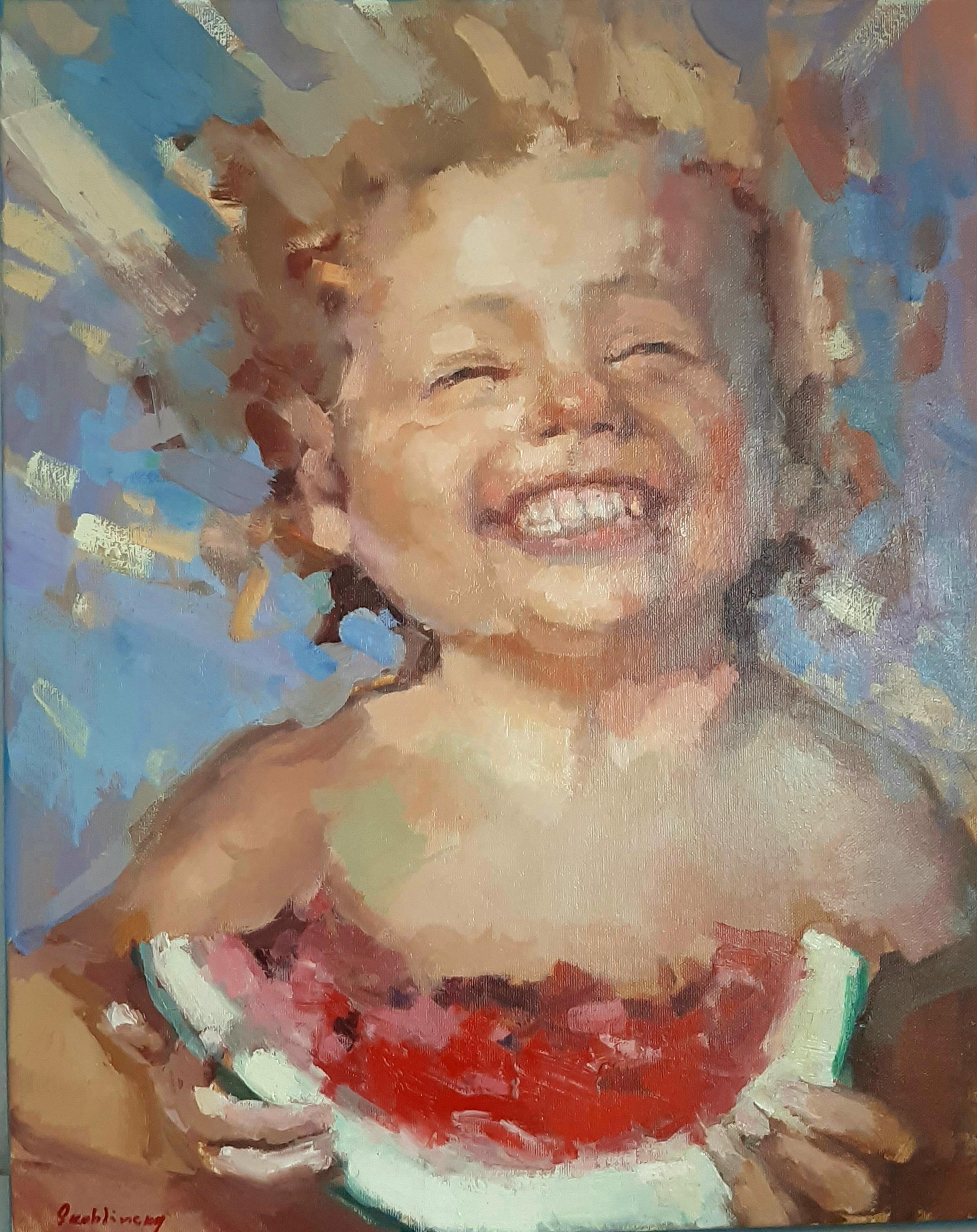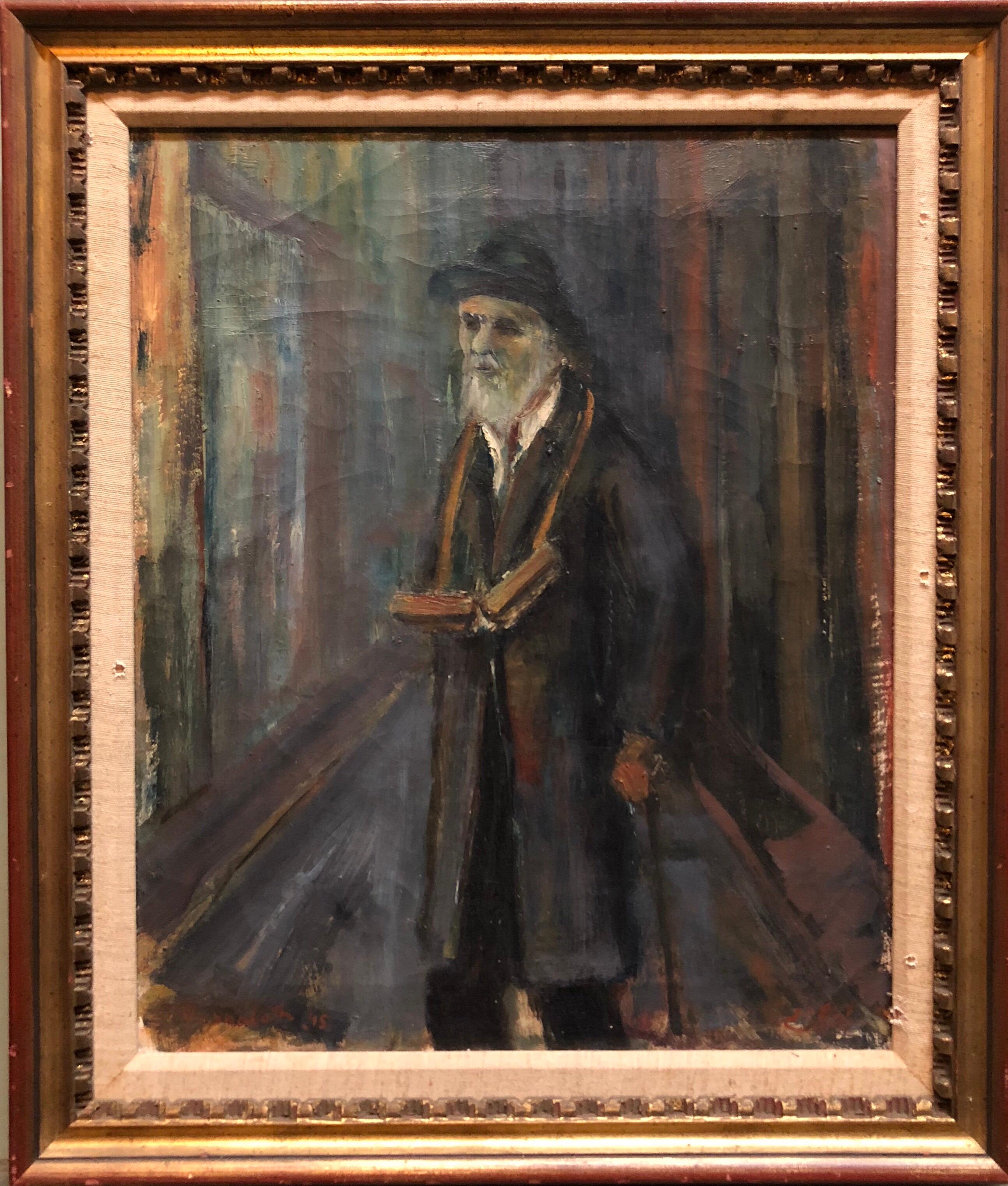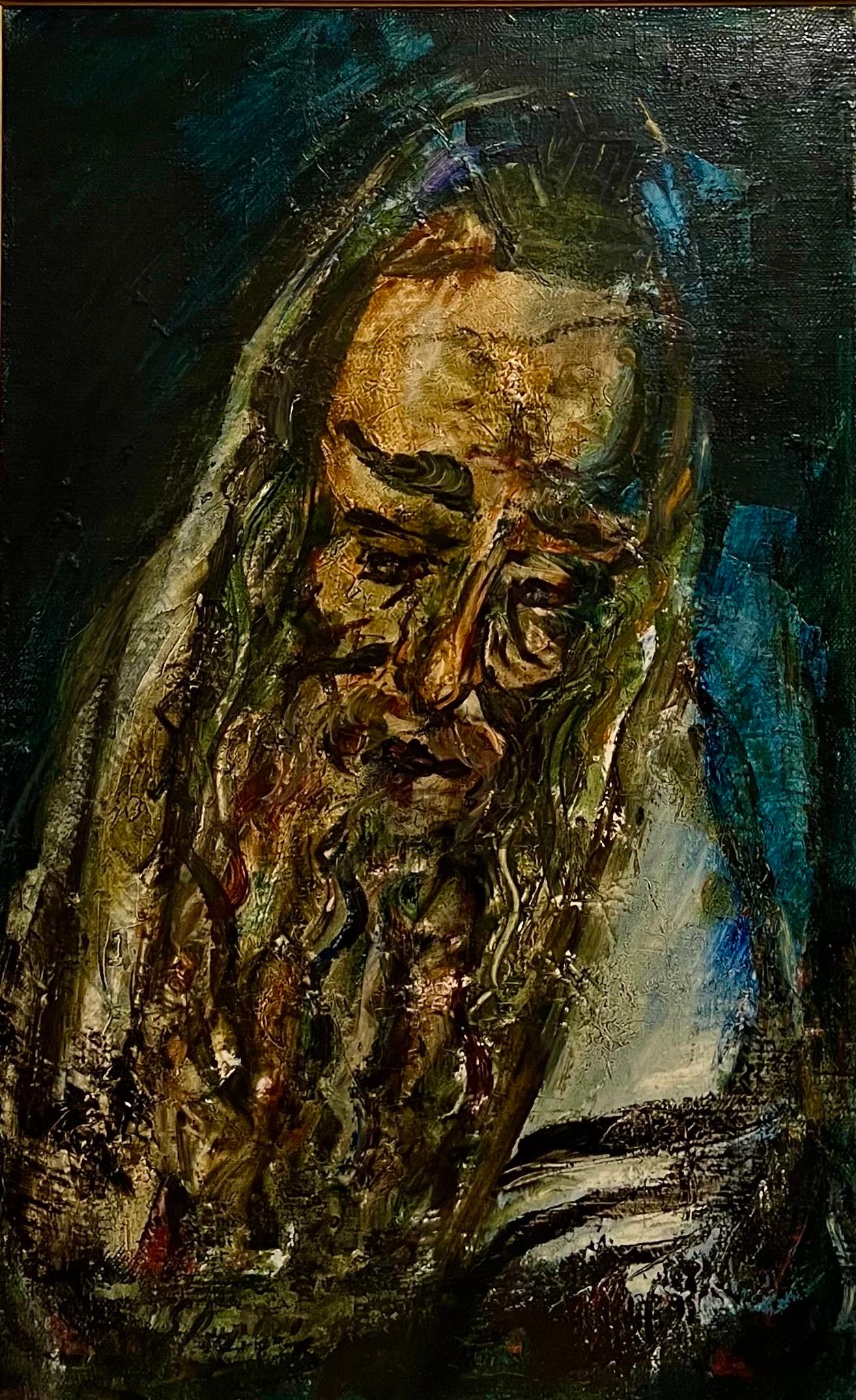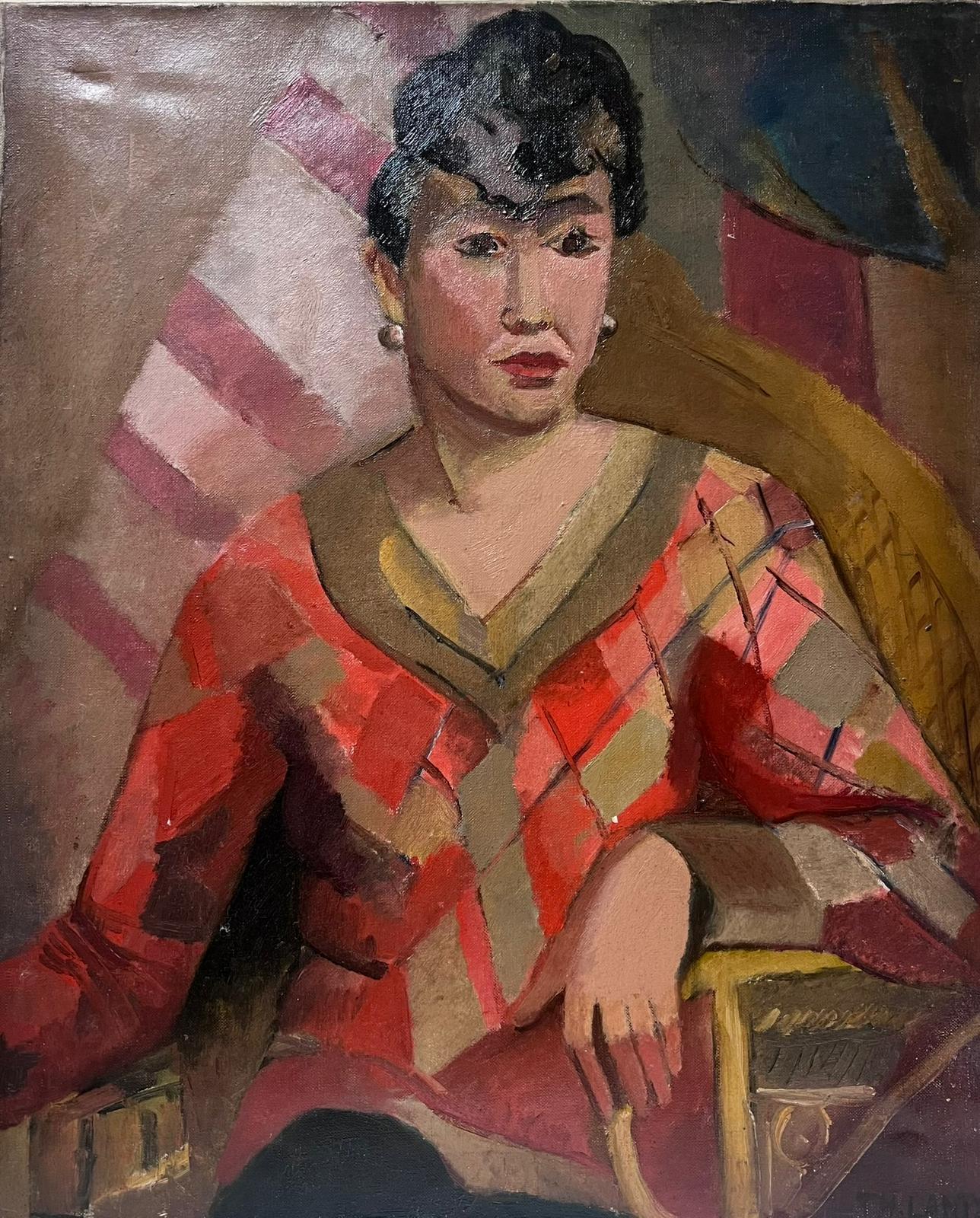Pierre-Auguste RenoirTête de Femme Blonde by Pierre-Auguste Renoir - Portrait painting1908
1908
About the Item
- Creator:Pierre-Auguste Renoir (1841-1919, French)
- Creation Year:1908
- Dimensions:Height: 10.28 in (26.1 cm)Width: 7.49 in (19 cm)
- Medium:
- Movement & Style:
- Period:
- Condition:
- Gallery Location:London, GB
- Reference Number:1stDibs: LU261213613302
Pierre-Auguste Renoir
An early 20th-century master, Pierre-Auguste Renoir created thousands of figurative prints and paintings and is credited as one of the founders of the Impressionist movement. His frequently reproduced works are appreciated for their luminous appearance, rich colors and soft, feathered brushstrokes.
Renoir was born in Limoges, France, in 1841. He began painting as a child while working in a porcelain factory, which led to a formal study of art in Paris under Charles Gleyre. In the early 1860s, he often visited the Louvre to study French master painters, and he became friends with Claude Monet and Alfred Sisley, both leading Impressionists.
Renoir first exhibited his paintings in 1864, but he did not rise to prominence until his first exhibition with the Impressionists in 1874. In 1877, Renoir stopped exhibiting with the Impressionists and embarked on a series of travels. In 1881, he went to Algeria and Spain, meeting the artists Eugène Delacroix and Diego Velázquez. He continued to Rome, Sicily, Algeria and Guernsey, where he created 15 paintings in one month in the summer of 1883.
In 1890, Renoir married Aline Victorine Charigot, a portrait model and muse for many of his works. They had three sons, and in 1907, Renoir moved his family to the village of Cagnes-sur-Mer, near the Mediterranean. By this time, he had developed arthritis in his hands, and he had a stroke in 1912, after which he used a wheelchair. Renoir continued to paint for the rest of his life, even strapping a brush to his paralyzed fingers.
Shortly before his death in 1919, Renoir visited the Louvre to see his paintings now hanging next to the artistic icons that he used to study and admire. He returned to his home village and died in December of that year.
On 1stDibs, find Pierre-Auguste Renoir paintings, prints and sculptures.
- ShippingRetrieving quote...Ships From: London, United Kingdom
- Return PolicyA return for this item may be initiated within 7 days of delivery.
- Figurative oil painting titled Femme Mettant Son Bas by Georges Manzana PissarroBy Georges Henri Manzana PissarroLocated in London, GBFemme Mettant Son Bas by Georges Manzana Pissarro (1871 - 1961) Oil on canvas 100 x 56 cm (39 ⅜ x 22 inches) Signed and dated lower left, G. Manzana 1905 This work is accompanied by...Category
Early 1900s Post-Impressionist Figurative Paintings
MaterialsCanvas, Oil
- Le Collier de Perles by Ludovic-Rodo Pissarro - Portrait paintingBy Ludovic-Rodo PissarroLocated in London, GBLe Collier de Perles by Ludovic-Rodo Pissarro (1878-1952) Oil on canvas 61 x 50 cm (24 x 19 ⅝ inches) Signed and dated lower right, Ludovic Rodo 1927...Category
1920s Post-Impressionist Figurative Paintings
MaterialsCanvas, Oil
- Portrait of a Woman by Ludovic-Rodo Pissarro - Portrait paintingBy Ludovic-Rodo PissarroLocated in London, GB*UK BUYERS WILL PAY AN ADDITIONAL 20% VAT ON TOP OF THE ABOVE PRICE Portrait of a Woman by Ludovic-Rodo Pissarro (1878-1952) Oil on canvas 55 x 46 cm (21 ⁵/₈ x 18 ¹/₈ inches) Signed...Category
Early 1900s Fauvist Figurative Paintings
MaterialsOil, Canvas
- Femme à la cravatte by Ludovic-Rodo Pissarro - Portrait paintingBy Ludovic-Rodo PissarroLocated in London, GBFemme à la cravatte by Ludovic-Rodo Pissarro (1878-1952) Oil on canvas 65 x 54 cm (25 ⁵/₈ x 21 ¹/₄ inches) Signed lower right, Ludovic Rodo Executed circa 1910 This work is accompan...Category
1910s Post-Impressionist Figurative Paintings
MaterialsOil, Canvas
- The Fortune Teller by Orovida Pissarro - Oil paintingBy Orovida PissarroLocated in London, GB*UK BUYERS WILL PAY AN ADDITIONAL 20% VAT ON TOP OF THE ABOVE PRICE The Fortune Teller by Orovida Pissarro (1893-1968) Oil on canvas 60 x 73 cm (23 ⁵/₈ x 28 ³/₄ inches) Signed and d...Category
1950s Modern Figurative Paintings
MaterialsCanvas, Oil
- Nylons and Bric-a-Brac by Orovida Pissarro - Oil paintingBy Orovida PissarroLocated in London, GB*UK BUYERS WILL PAY AN ADDITIONAL 20% VAT ON TOP OF THE ABOVE PRICE Nylons and Bric-a-Brac by Orovida Pissarro (1893-1968) Oil on canvas 73 x 60 cm (28 ³/₄ x 23 ⁵/₈ inches) Signed and dated upper right Orovida 1951 Provenance Estate of the artist With John Bensusan-Butt, cousin of the artist G Hassell, 25th November 1988 With John Noott, 10th June 1992 Literature K L Erickson, Orovida Pissarro: Painter and Print-Maker with A Catalogue Raisonné of Paintings, (doctoral thesis), Oxford, 1992, Appendices, no. 141 (illustrated) Exhibition London, Redfern Gallery, Recent Paintings: Orovida, 3rd-26th January 1952, no. 51 Artist biography Orovida Camille Pissarro, Lucien and Esther Pissarro’s only child, was the first woman in the Pissarro family as well as the first of her generation to become an artist. Born in Epping, England in 1893, she lived and worked predominantly in London where she became a prominent member of several British arts clubs and societies. She first learned to paint in the Impressionist style of her father, but after a brief period of formal study with Walter Sickert in 1913 she renounced formal art schooling. Throughout her career, Orovida always remained outside of any mainstream British art movements. Much to Lucien's disappointment she soon turned away from naturalistic painting and developed her own unusual style combining elements of Japanese, Chinese, Persian and Indian art. Her rejection of Impressionism, which for the Pissarro family had become a way of life, together with the simultaneous decision to drop her famous last name and simply use Orovida as a ‘nom de peintre’, reflected a deep desire for independence and distance from the weight of the family legacy. Orovida's most distinctive and notable works were produced from the period of 1919 to 1939 using her own homemade egg tempera applied in thin, delicate washes to silk, linen or paper and sometimes embellished with brocade borders. These elegant and richly decorative works generally depict Eastern, Asian and African subjects...Category
1950s Modern Figurative Paintings
MaterialsCanvas, Oil
- young woman with basket of flowers oil on canvas paintingBy José RoyoLocated in Barcelona, BarcelonaFrame size 83x72 cm.Category
21st Century and Contemporary Post-Impressionist Figurative Paintings
MaterialsCanvas, Oil
- Sunshine Bliss: The Aroma of Summer Watermelon. Portrait Oil painting on canvasLocated in Zofingen, AGOil on canvas. "Sunshine Bliss: The Aroma of Summer Watermelon" In this painting, a vivid and joyful spectacle unfolds before us, as if a sunbeam has penetrated directly onto the c...Category
21st Century and Contemporary Post-Impressionist Portrait Paintings
MaterialsCanvas, Paint, Cotton Canvas, Lights, Oil
- Girl with fruit. Market. Year 1958. Signed Sergio Cirno Bissi (1902 - 1987)Located in Firenze, ITGirl with fruit. Market. Year 1958. Signed Sergio Cirno Bissi (Carmignano, 1902 - Florence, 1987). The very colorful and expressive painting is created...Category
1950s Post-Impressionist Portrait Paintings
MaterialsCanvas, Oil
- Judaica Oil Painting 1945 Palestine Old Jewish Man Polish Israeli ArtistBy Ozer ShabatLocated in Surfside, FLOzer Shabat 1978-1901 Ozer Shabbat was an Israeli painter, a resident of Haifa. Belonged to the Palestine Expressionist group of the late 1920s and early 1930s. Shabbat was born in Wolbrom, Poland. At the end of the First World War he went to Holland for agricultural training in the framework of the HeChalutz movement, prior to his immigration to Palestine. In 1920 he immigrated to Eretz Israel and joined the Hulda group. Later he joined the Merhavia group and there he began painting. Because of his desire to study drawing, he left the group and moved to Jerusalem. In 1921, he wrote articles in the newspaper "HaSadeh" on the subject of agriculture and Dutch cheese. Ozer Shabath won the first prize in a competition for the design of the Dutch Consulate's Garden in Jerusalem, enabling him to travel to Paris in 1923 to study painting. Until 1925 he studied painting at the Grande Chaumiere Academy in Paris. This year he returned to Eretz Israel and settled in Haifa, where he lived until his death. In 1928 he participated for the first time in an exhibition of Eretz Israel artists at the Tower of David. Since then he has participated in all the general exhibitions of Israeli artists. In 1934, together with painters Menachem Shemi, Avraham Mohar, Zvi Meirovitch and others, he founded the Haifa Artists' Group. In 1935-36 he toured Europe and visited Italy, France and England. During his visit, he maintained contacts with artists from the Jewish school of Paris. He has exhibited in several solo exhibitions, represented Israel in exhibitions in Europe and participated in international exhibitions in New York, Johannesburg and Zurich. In 1958 he represented Israel in the Venice Biennale. In 1960, Shabat, together with Elchanan Halpern he represented the Israeli Painters Association at the International Congress of Plastic Arts held in Vienna, Austria . In the 40s and 50s he focused on landscape pictures. However, despite the focus on the Israeli landscape, the approach is universal in the framework of the post-Impressionist painting school. In the 1960s, his approach changed and he turned more to abstraction. The abstract direction gradually evolved. The point of departure of the abstract approach is the architectural landscape, but this view loses its real character and becomes only imaginary: the buildings lose their real character and turn into exclusive geometric areas that are usually set against a dark background. Over time, architecture captured the lion's share of his paintings. Cities like Safed, Jaffa and Jerusalem are the subject of many pictures. He taught painting and art at the schools of the kibbutzim in Ramat Yochanan and Kfar Yehoshua, in high schools in Haifa and in the IDF and Gordon seminars. His paintings were purchased and are in the permanent collection of the Bezalel National Museum (now the Israel Museum), Haifa Museum of Art, Haifa Maritime Museum, Acre Municipal Museum. Select Solo exhibitions 1936 - Nadler Gallery, Haifa. 1943 - The Tel Aviv Museum of Art. 1952 - Artists House, Haifa. 1953 - Bezalel House, Jerusalem. 1955 - Gallery in Geneva, Switzerland. 1955 - The Writers' Club, Haifa. 1959 - Artists House, Haifa. 1960 - Museum of Modern Art, Haifa. 1962 - Museum of Modern Art, Haifa. 1963 - Gallery 220, Tel Aviv. 1968 - The Municipal Museum of Beit Emanuel, Ramat Gan. 1979 - Memorial exhibition marking the first anniversary...Category
1940s Post-Impressionist Figurative Paintings
MaterialsCanvas, Oil
- Large Judaica Jerusalem Oil Painting Israeli Jewish Rabbi Artist Tzvi RaphaelyBy Zvi RaphaeliLocated in Surfside, FLRabbi Portrait, Oil Painting Framed: 37.5 x 26. Canvas: 31.5 X 20 Bears original label verso from Safrai Gallery Lovely Israeli Chassidic Rabbi portrait oil painting, vibrant colorful painting. Hand signed in Hebrew and English. Done in a style similar and influenced by Marc Chagall. Svi Raphaely (also known as Tzvi Raphaeli...Category
20th Century Post-Impressionist Figurative Paintings
MaterialsCanvas, Oil
- Antique French Fauvist 1920's Signed Oil Painting Portrait of Fashionable LadyLocated in Cirencester, GloucestershirePortrait of a Lady French School, fauvist style indistinctly signed circa 1920's period oil on canvas, unframed canvas: 22 x 18 inches provenance: private collection condition: very ...Category
Early 20th Century Fauvist Portrait Paintings
MaterialsOil, Canvas





